Teaching the Perfect Stop
Top 5 Tips
|
Stopping cue; ever need it and not have it? If you have ever had a runaway, you know exactly what I mean. If not, consider yourself lucky. The stop should be one of your horse’s best cues.
Most riders use one of four cues, or a combination of them, to get their horse to stop. These cues are leaning back, shifting their weight deep into the saddle, pulling back on the reins, or saying whoa.
In this lesson, Dustin Grams will teach you how to train your horse to be a big stopper by engraining a few cues into your foundation training. He will give you light and subtle pressure exercises that achieve the correct response from your horse and develop greater stopping power.
To begin, take your horse’s nose to a corner of an arena or to a fence. A corner is ideal to help prevent your horse from walking forward, or escaping to either side in order to get relief from the pressure.
From a standstill, lean back in the saddle and take your legs completely off of your horse’s belly. With the slack taken out of your reins, pull both reins back toward the top of your thighs. When doing this, use the lightest pull strength possible that you know will still cause your horse to respond. Hold this constant light pressure with no increase or decrease to the strength of your pull. Say whoa in a calm, drawn-out monotone voice. Bump your horse’s belly with your legs to encourage movement in your horse’s feet. At this point, your horse may get confused and try to walk forward. If he does, increase the rein pressure enough to stop him, but continue bumping. When your horse responds, you will feel him soften to your pull, putting slack in the reins or by taking a step back. As soon as he does, release all pressure.
Is Your Horse Ready?
|
Once your horse knows the cues for the back up at the fence, you will move to the middle of the arena, using this same technique at a standstill. Soon, when you lean back, take your legs off and start to lift your reins, your horse will already be backing up. This is when you can add forward drive to your horse’s feet.
With your horse’s feet moving at a walk, you will add in a couple of cues to each back up. After completing the back up, stop and sit for a minute. This is his reward for doing the right thing. Next, turn your horse, at least a quarter of a turn, walking him off in a different direction than his stop. This helps prevent a horse from developing a habit of stopping for a mere second, before continuing ahead without you asking him to leave the stop. By sitting for a minute you teach him to be patient. Changing directions will teach your horse that he needs to wait for you to make the decision which direction he will travel next.
| Lean back in the saddle and take your legs off your horse’s belly. With the slack out of your reins, pull lightly on both reins towards the top of your thighs. Say whoa in a calm, drawn-out monotone voice. Bump your horse’s belly with your legs to encourage movement in your horse’s feet. If he walks forward, increase the rein pressure enough to stop him, but continue bumping. | 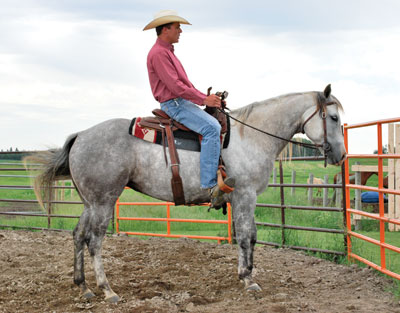 |
| Once your cues are ingrained in the horse from working in the corner or at the fence, head to the center of the pen. Still practicing at a standstill, you will also be using added leg pressure to keep your horse straight during the back up. | 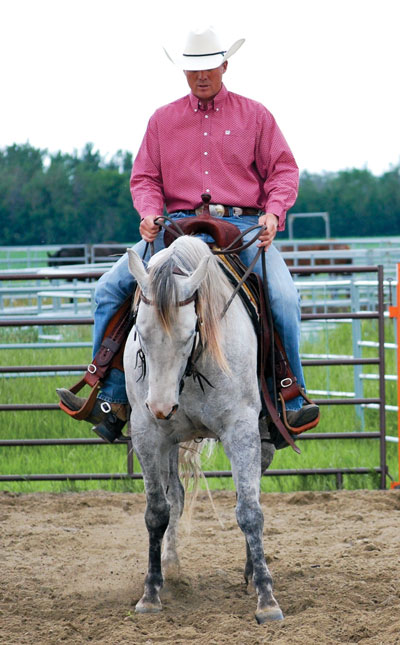 |
| Release rein pressure, stop bumping and sit up once your horse takes a step back. Gradually start asking for an extra step or two before you release. | 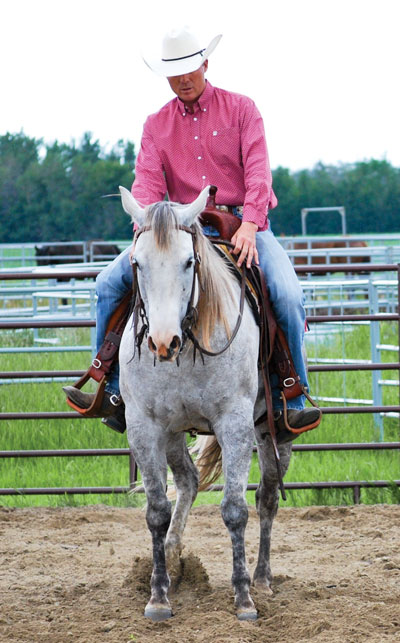 |
| When you start with forward movement, walk your horse in a straight line across the center of the pen on a loose rein | 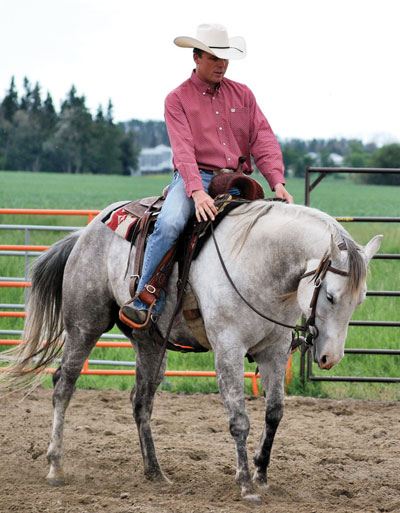 |
| Using the same back up cues you used standing still, sit back, take your legs off and pull your reins. Your rein pull should be on a scale of 1-5; one being light pressure and five being the max you would draw your reins back with the ability to hold constant pressure for a long period of time. As your horse gets more responsive, gradually decrease the strength of your pull. To increase your horse’s backing speed, increase the speed of your bumping, not the strength of your pull on the reins. | 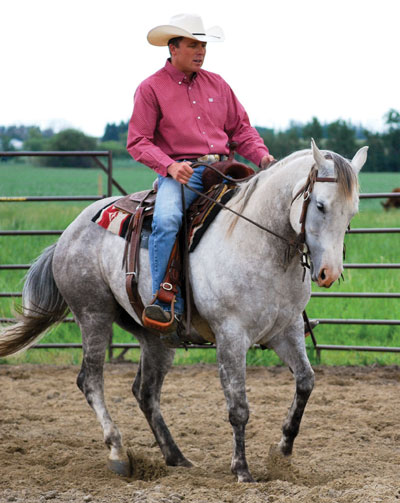 |
| After your horse has completed backing, allow him to stand and relax for a minute as his reward for getting the cues correct | 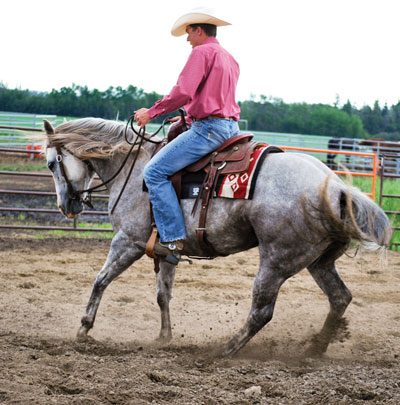 |
| As you leave the stop, turn your horse at least a quarter of a turn and walk off in a different direction | 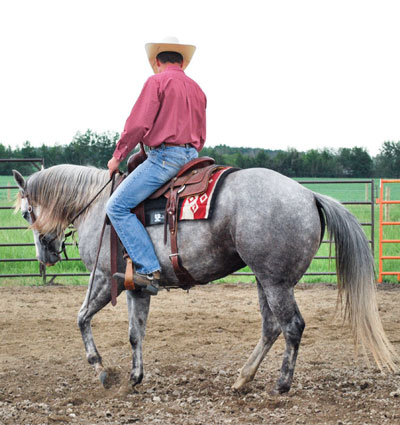 |
Thank you to Brooklyn Cowles, owner of the eight-year-old Quarter Horse mare HS Donedins Angel (aka Sage) featured in this article.
Dustin Grams is a professional trainer from Rollyview, Alta., where he specializes in young barrel racing prospects, two-year-old futurity cutting horse prospects, team penning, and sorting horses. Dustin has been a featured clinician at Northlands FarmFair numerous times.
Darla Rathwell is a freelance writer based in Hay Lakes, Alta. When not writing, you’ll find her working on horsemanship skills.
Photos by Darla Rathwell













